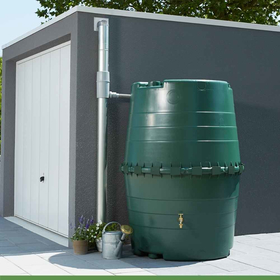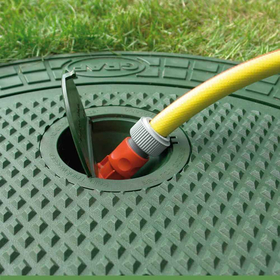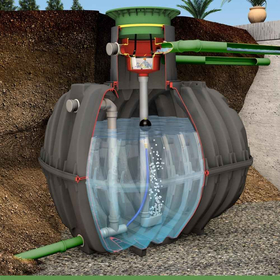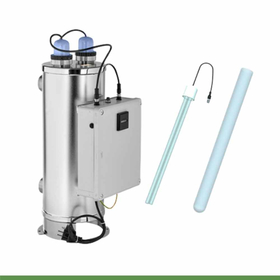Installing a rainwater collector: the complete guide 2022
With increasing periods of drought , the installation of a recuperator has many advantages. To help you, follow our advice to install it easily
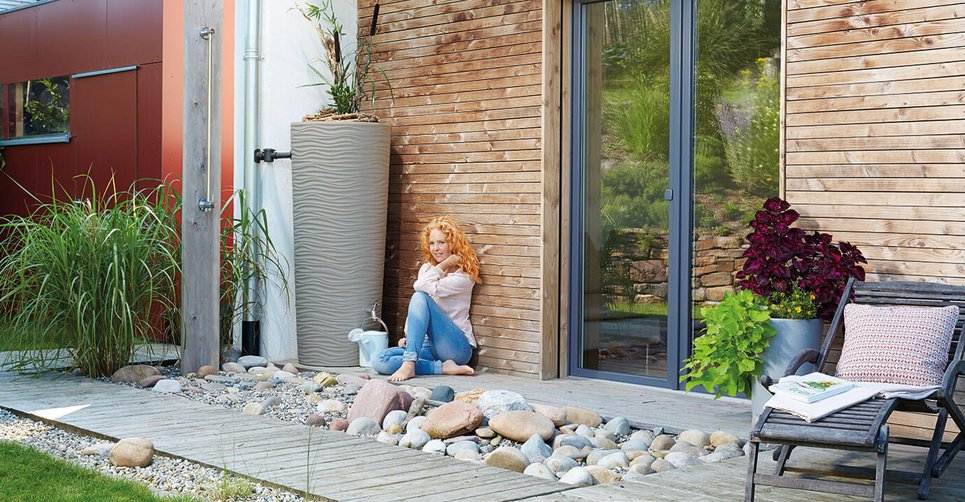
Installing your rainwater collector: the 5 steps to follow
Installation is a fairly simple operation if you follow the manufacturer's recommendations. We will take the example of this installation tutorial from the manufacturer GRAF, a German brand.
In addition, we also invite you to discover our article and the online simulator to calculate the volume for your rainwater recovery tank
Tools and equipment required for your installation
- Drill, ideally cordless for convenience
- Spade bit or hole saw (sometimes supplied in the accessory kit delivered with the recuperator)
- Depending on the kit, provide a screwdriver, a cutter
- Spirit level
In your kit, check the presence:
- Collector complete (check the cover) and in good condition
- Collector
- Connection hose
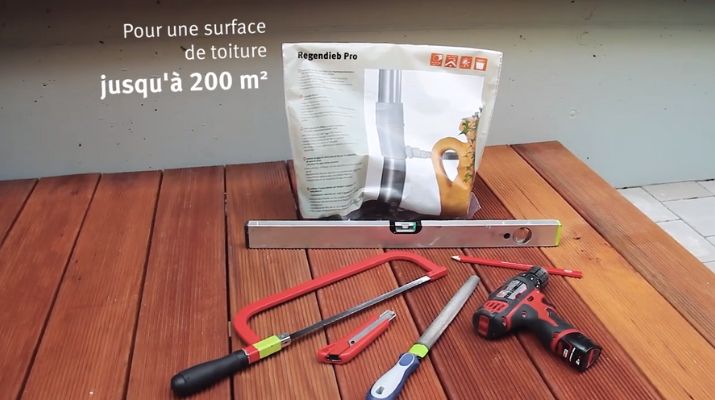
1. Preparing the collector location
Before installing a rainwater collector , make sure that the chosen location is:
- Dish
- Steady
- Able to support the weight of the full collector (and yes, a little reminder, 1000 liters of water is a ton).

2. Installation of the water collector
The collector makes the connection between your gutter and your storage. It is therefore necessary to drill to position it in the downspout of your gutter:

Some collectors incorporate a hole saw to facilitate assembly, as we can see in the video.
For the height, this collector must be at the maximum water level.
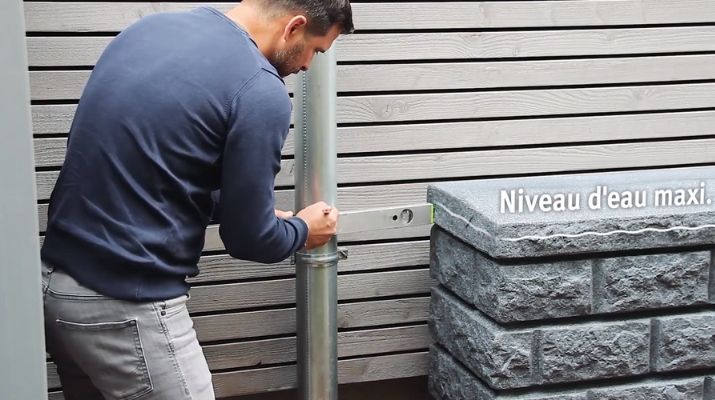
3. Connect the recuperator to the gutter
Depending on the collector models, it is also necessary to drill it:
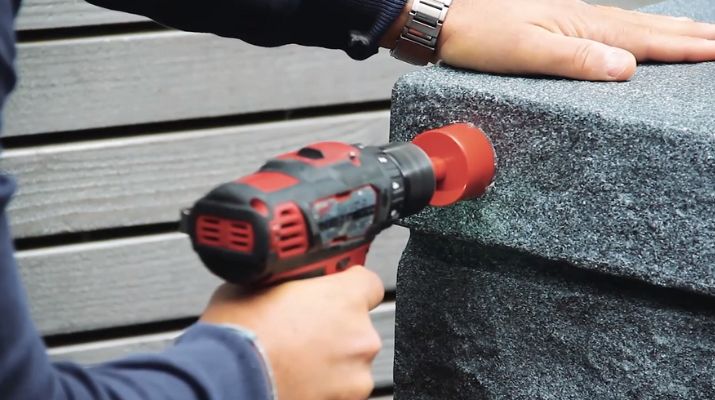
A seal is then fixed which ensures the correct sealing of the connection pipe.
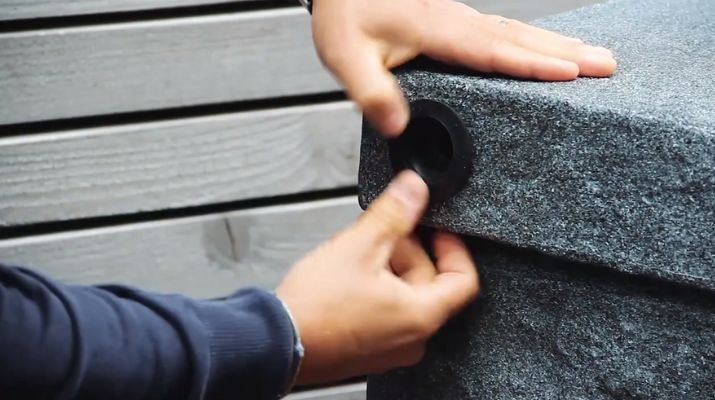
4. Secure the tank
On some models, drill the nearby wall to insert a dowel. This then makes it possible to maintain the reservoir in position, whatever the volume present.
5. Install the pump or faucet
5 good reasons to install a rainwater collector
An ecological gesture
When you use the rainwater that you store, this avoids using the public network, which is often fed by groundwater. They have generally suffered in recent years, with a worrying level. Water Only 10% of the drinking water we consume is used for hydration.miss or the kitchen.
Anticipating rising water prices
With the significant increase in the cost of energy in 2022, an increase in the price per cubic meter of water is to be expected. In fact, extracting this resource from the groundwater, processing it and then distributing it to all the dwellings requires a gigantic quantity of electricity. Therefore, even if today your budget for water is reasonable, the installation of a recuperator will be very useful in the face of this increase. Keep this fact in mind: a French person consumes an average of 150 to 200 liters of water per day. If the surface of your garden is around 200 m², the saving can be up to almost €200 each year.
Dealing with water restrictions
With the water you store, your autonomy is greater, especially if the restrictions for using water multiply.
Use untreated water
For gardening enthusiasts, rainwater is an ally for keeping plants in good shape: this water has never been treated to make it drinkable. Be careful, you cannot drink it, but it is not loaded with chlorine or chemicals to disinfect it. It does not contain any additives either while being slightly acidic (ph around 6 against 7 for drinking water): it is perfect for plants.
Retention of rainwater in the event of a storm
In recent years, precipitation has tended to be rarer while being more violent. This causes different floods. Your collector can participate, depending on its volume, in limiting the consequences of a heavy downpour.
The different types of rainwater harvesters
Aerial rainwater collector
Ideal for watering your garden, an outdoor tank is simple to install and economical. It is positioned directly outside your house, near a downspout from your roof. Most often, they are made of polypropylene with a treatment to resist UV.
The volume varies between 200 to 1000 liters in general. In order to facilitate aesthetic integration, the design sometimes recalls an amphora or a stone wall. Conversely, the cheapest 1000 liter tanks are cubic.
To distribute the stored water, a tap is integrated on the bottom. This explains the presence of a base to raise your installation above the ground.
Buried rainwater collector
In this case, we are talking more about a buried rainwater recovery tank , ideally intended for larger volumes (1000 to 10,000 litres). Because of the work to be done to extract the earth, the intervention of a navvy is necessary.
We will find the concrete tanks as well as the HDPE (high density polyethylene) tanks.
The use can go further:
- Garden,
- Floor cleaning
- Toilets and flushing
- Washing machine if you have a suitable water treatment system
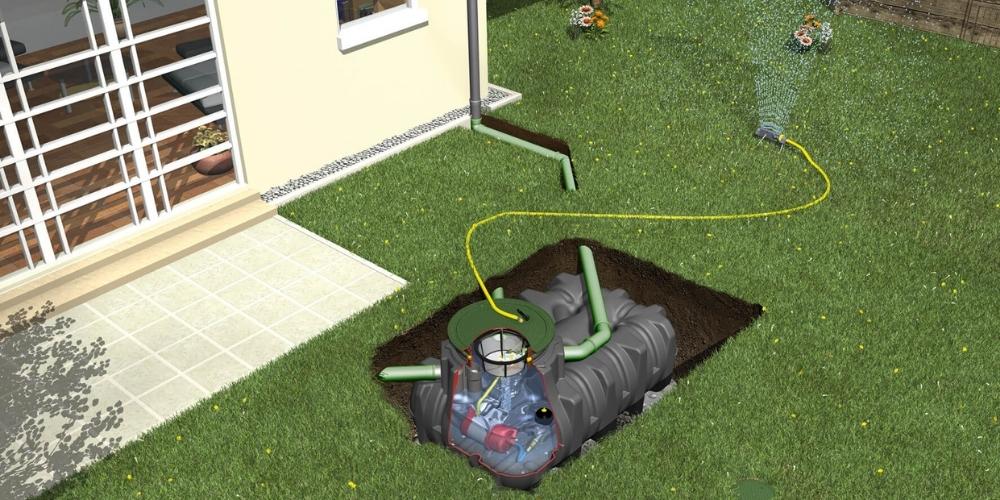
The investment is much more substantial: provide between €2,000 and €10,000.
4 tips for your rainwater collector
Provide a filter integrated into the gutter
In order to obtain relatively clean water, the leaves and the larger organic compounds must be filtered from the start. Equip yourself with a collector with integrated filtration, this will prevent your water from turning quickly.
Provide a tank of sufficient capacity
Depending on your region, the size of your roof, your needs are totally different. We simply advise you to plan wider to anticipate longer periods without rain.
Collector with a summer/winter position
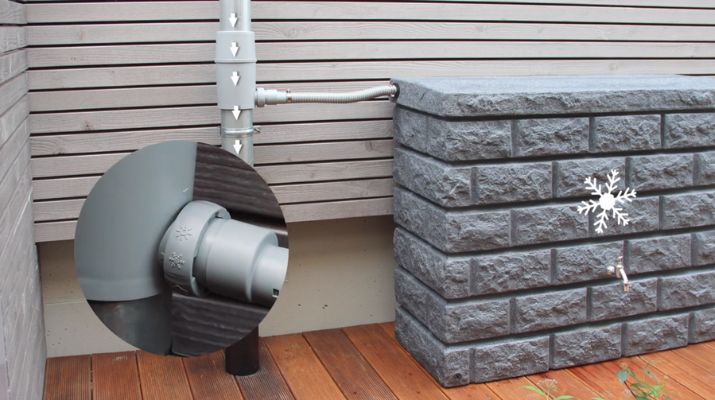
To avoid frost-related problems, we recommend equipping yourself with a collector that can switch to the winter position. In this position, the water that comes down from your gutter continues directly to the rainwater drainage system.
Choice of location
To limit the impact of the summer heat, it is important to position your recuperator (ideally) in the shade, on the north side.
The best brands of rainwater harvesters
Here is a list of the best known brands on the French market. He surely has some forgotten ones, we cannot list them all.
The classification is carried out only in alphabetical order, the position of a mark compared to another does not have any bond on the respective qualities of the distributed products.
- belli
- Eda
- Elho
- Guaranteed
- graf
- landi
- Nicoll
- Renson
The price of a rainwater harvester
The budget for a water collector varies according to the following parameters
- Capacity of the water tank: the first suits start around a hundred euros
- Desired use: are you going to water the garden only or do you want a complete installation to supply the toilets, the washing machine?
- Aboveground or buried tank: the earthworks and connection works are totally different
- Accessories (booster pump, filtration, water treatment)
To give you an order of magnitude, for an above-ground recuperator, let's count from 80 € to 500 € . This corresponds to “simple” water collection, with a reserve of a few hundred litres, the collector and the tap/pump.
In the case of a concrete or HDPE tank, allow 3,500 to 10,000€ for a complete installation (with water management console, filtration, earthworks, intervention of a plumber). You can come back to you for a personalized quote.
Conclusion
Easy to install, affordable and without major work, the outdoor rainwater collector is an asset for watering your garden all year round. Your house will be more beautiful thanks to watering facilitated by your water supply. Depending on the size of your land, an investment in a pump is also a good solution to make your life easier!
However, if you want to use this water for inside the house, an underground tank with a dedicated network, a filtration and treatment system are essential for your project. We hope this guide has helped you see things more clearly.
A step is unclear? Contact us directly by email
Questions about installing a rainwater harvester
How to connect a garden hose to a water collector?
On a large part of the recuperators, a thread is integrated to help you add the tap, most often supplied with it.
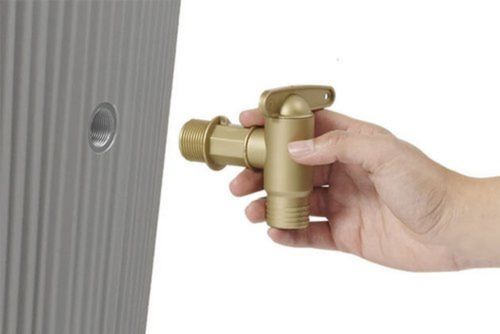
How to keep rainwater from a recuperator clean?
To keep the rainwater clean (it is not drinkable for all that), you must provide filtration at the level of the gutters and the collector.
This will remove all the larger particles. To go further, equip yourself with a station with filter cartridge + UV treatment.
How to connect several water collectors?
To increase your storage capacity, there are kits for pairing several collectors.
How to clean a water collector without a lid?
What are the regulations?
If you use rainwater for your home (toilet flushing, floor cleaning, washing machine, etc.), French law imposes:
- The reclaimed water is jamconnected to the public network to avoid any risk of contamination.
- A dedicated display
- A declaration at the town hall
- Use a dedicated processing system
- ban on having a tap with this water inside the house (outside the garage or basement)
- Checking and regular maintenance
Find complete information on rainwater harvesting regulations
Could we drink the rainwater?
French law is quite clear on the subject: no. We invite you to read our article on the subject
No posts found
Write a review
